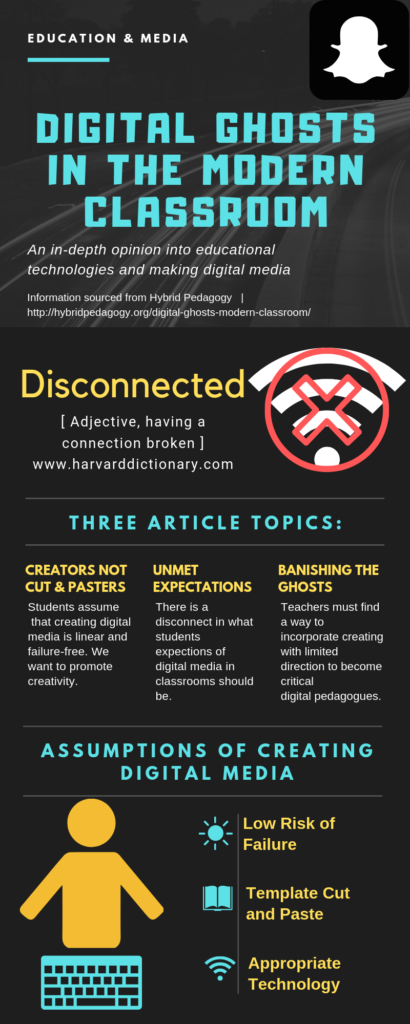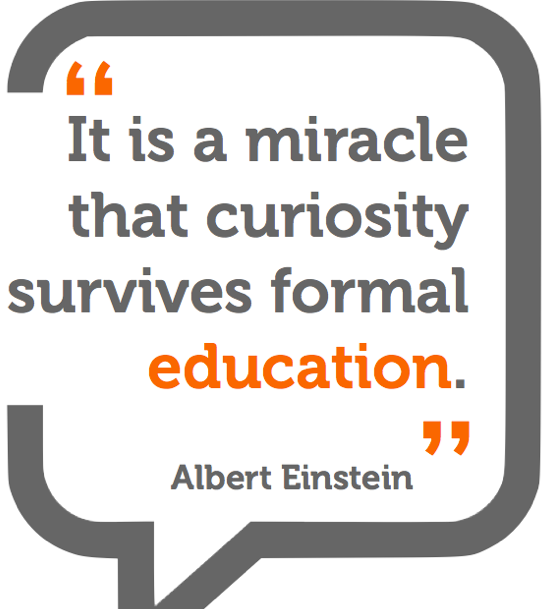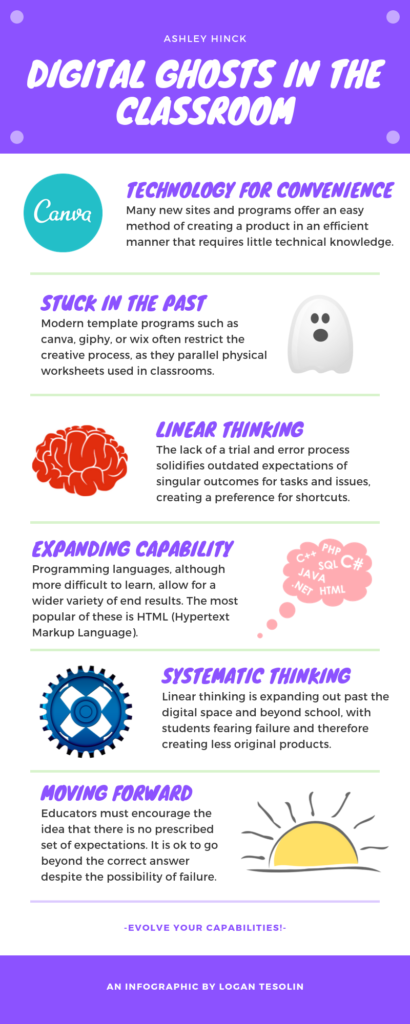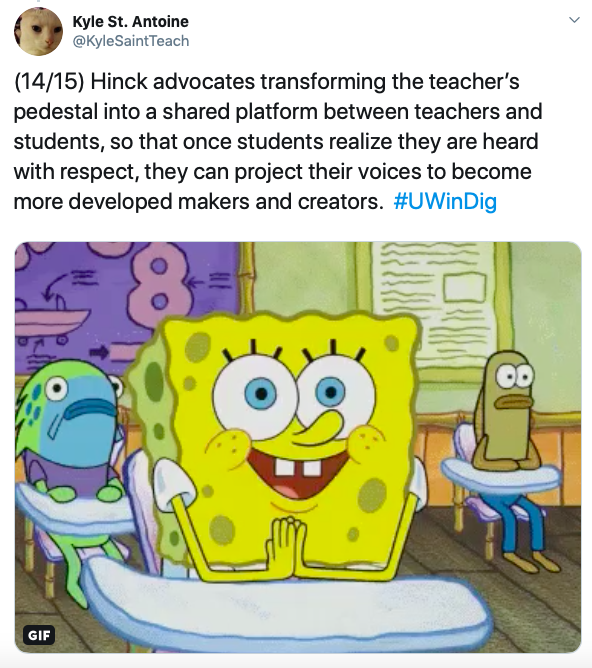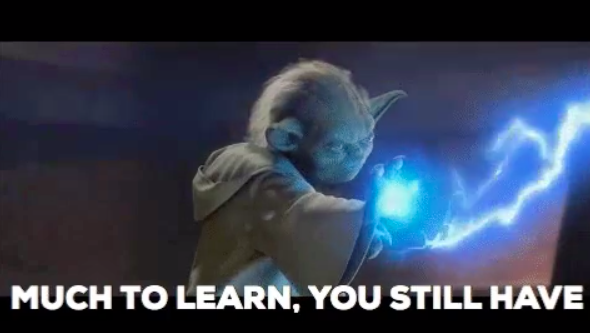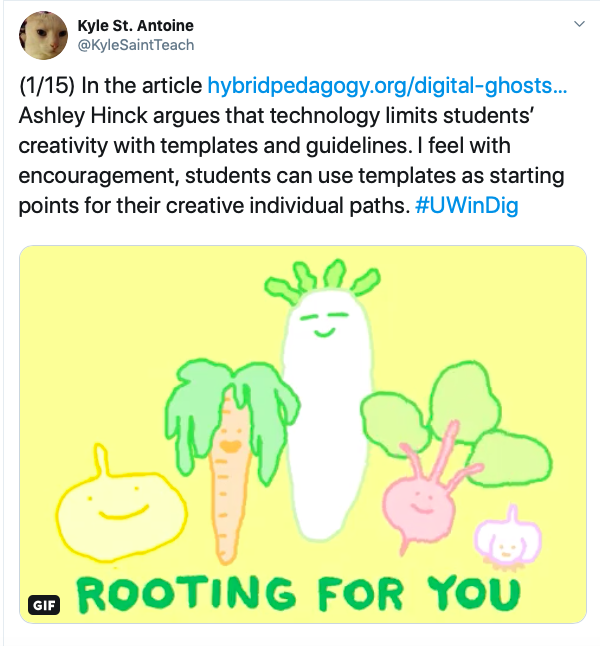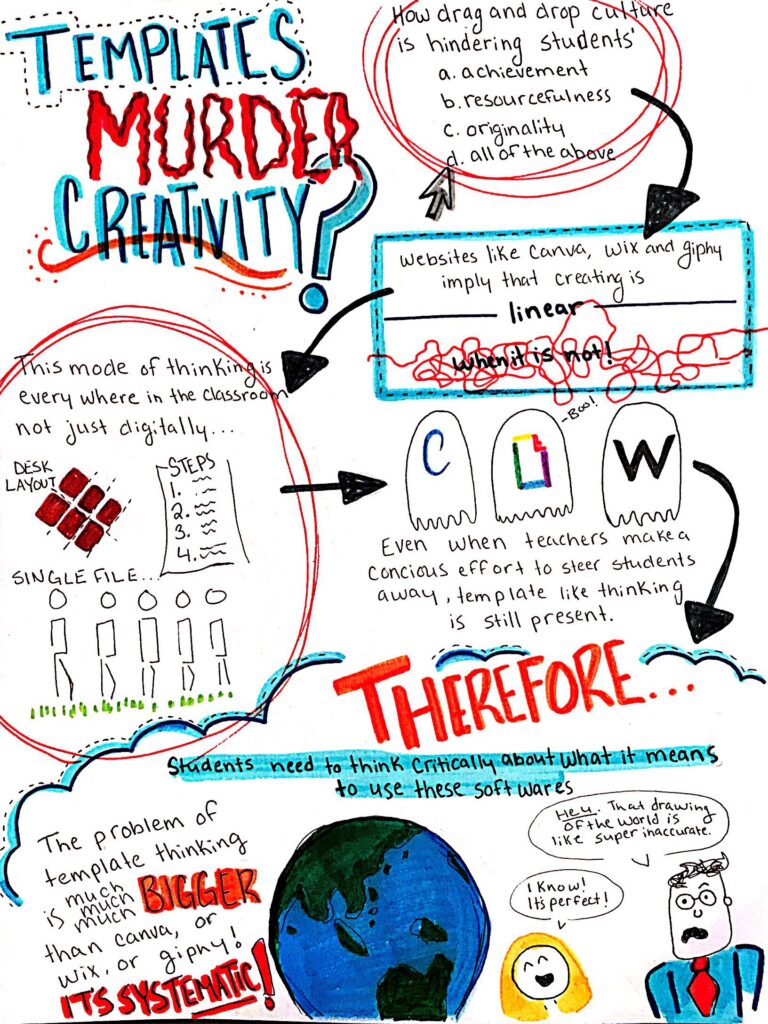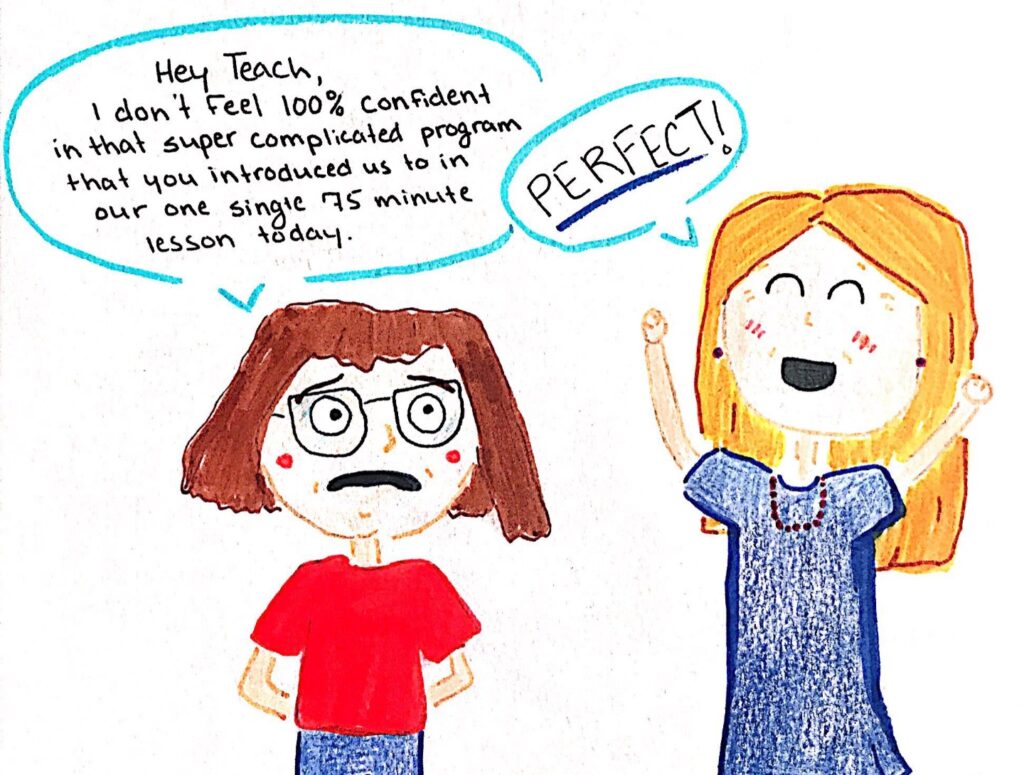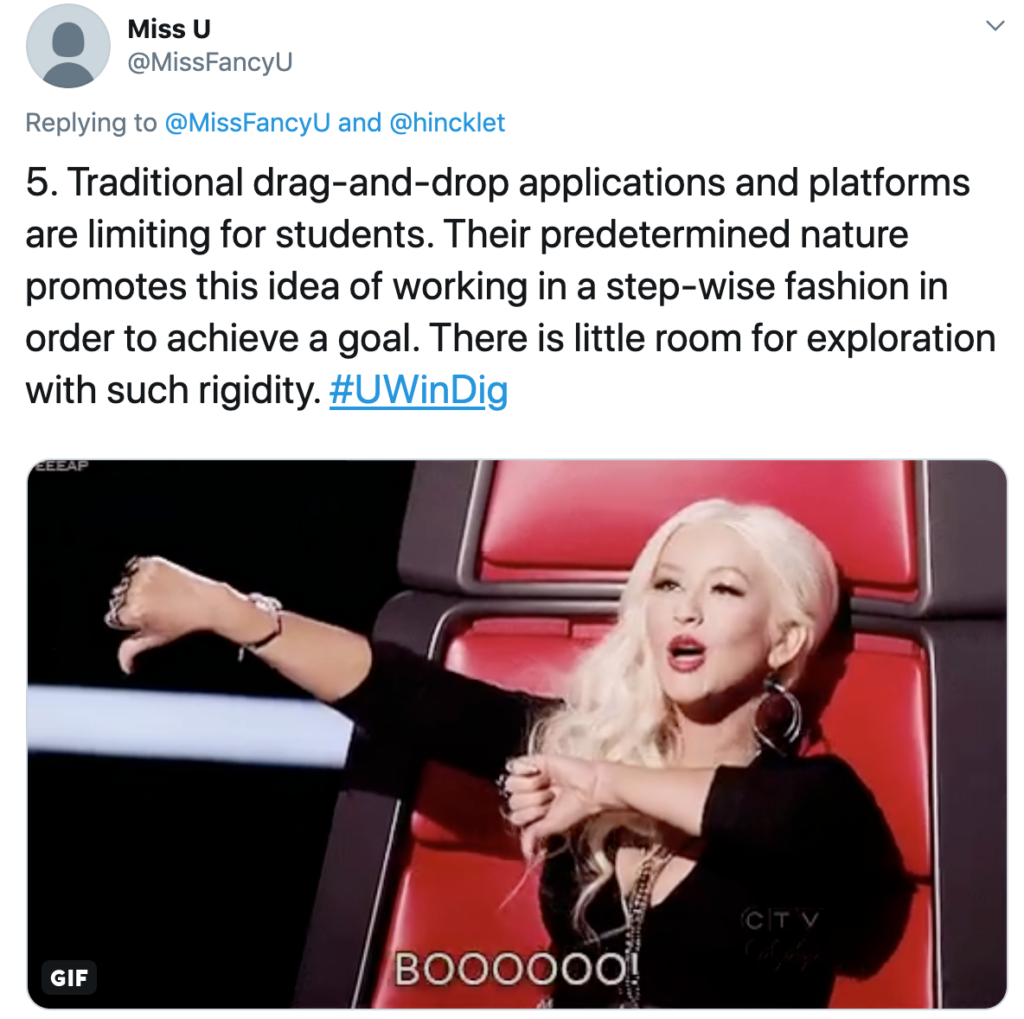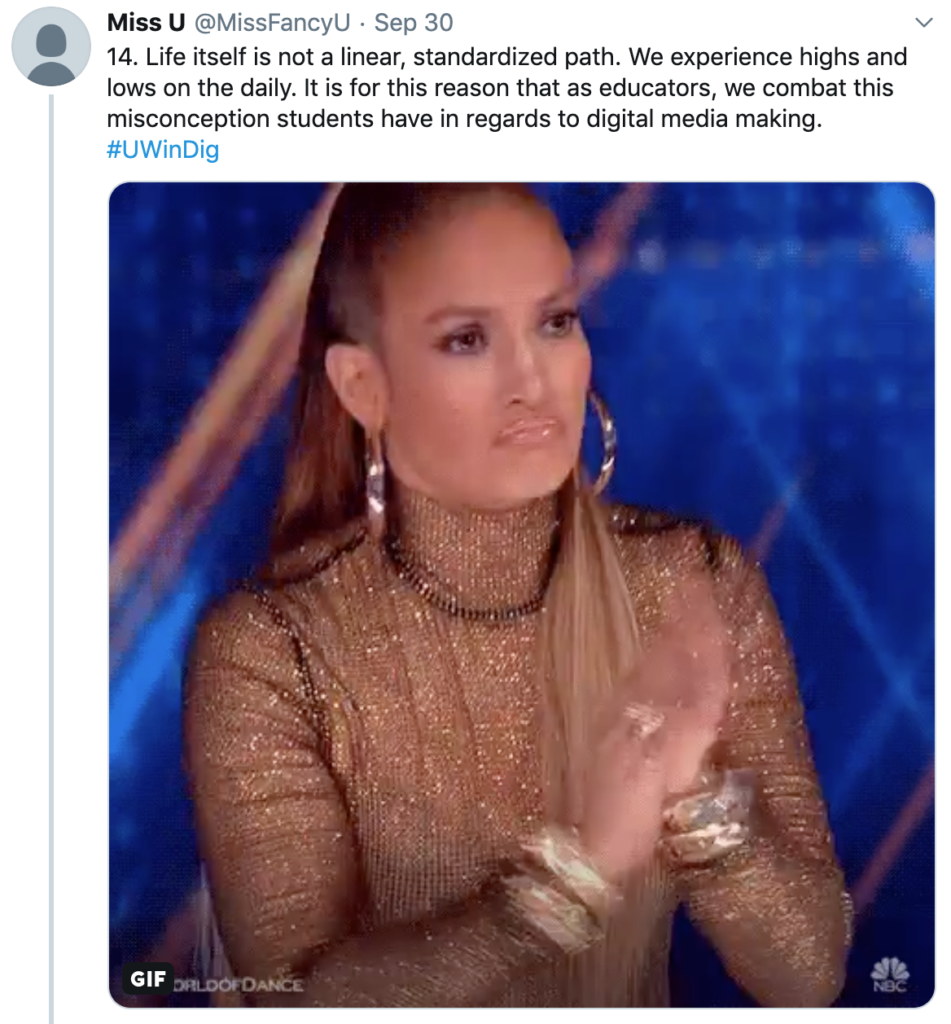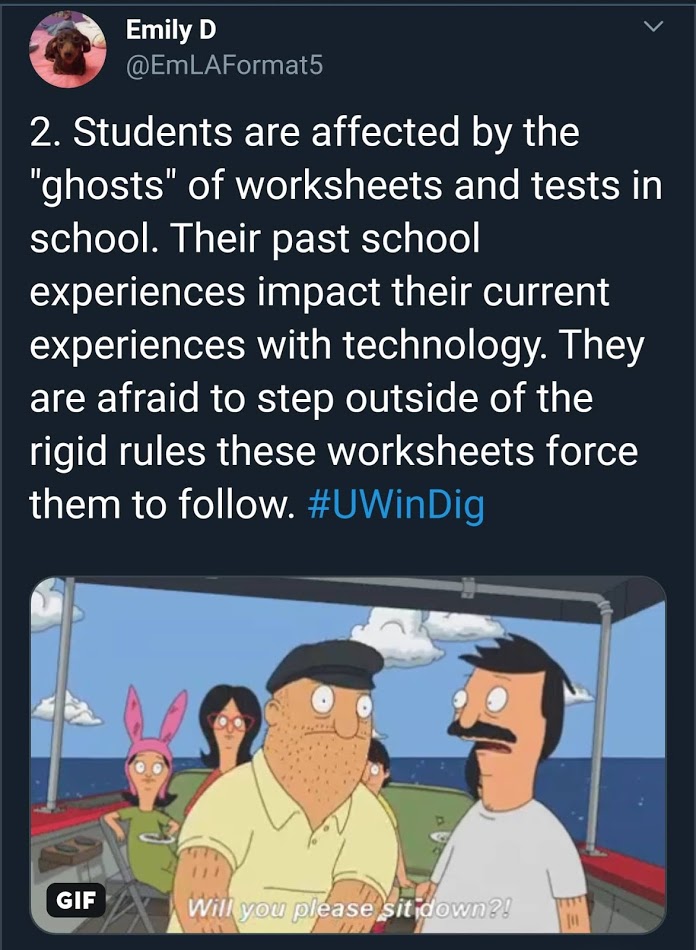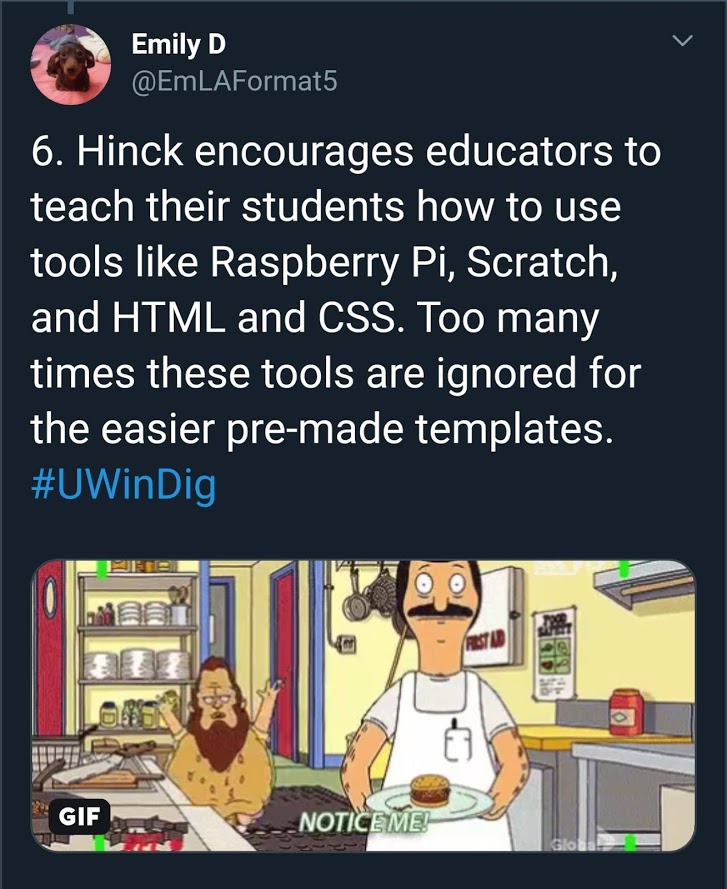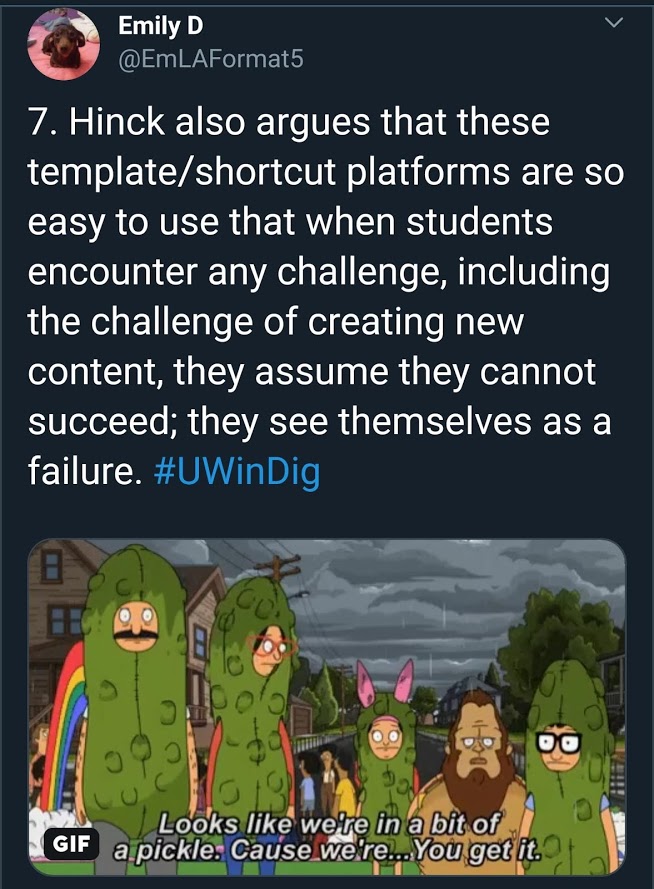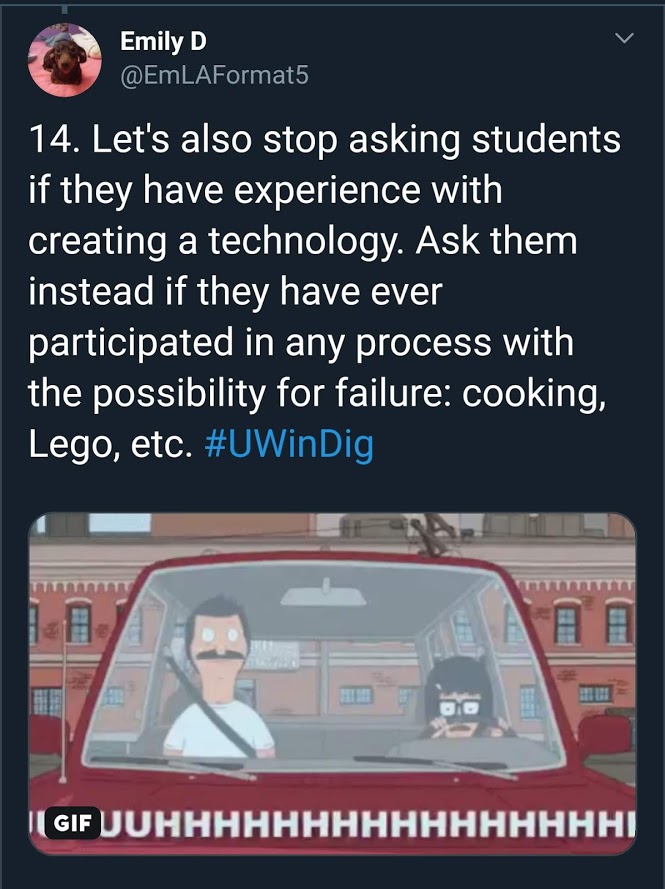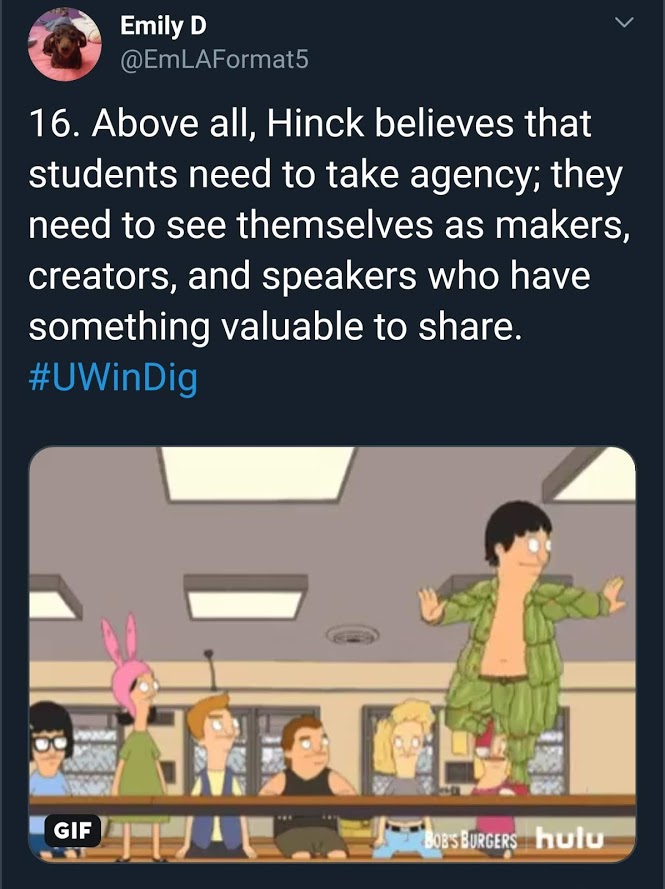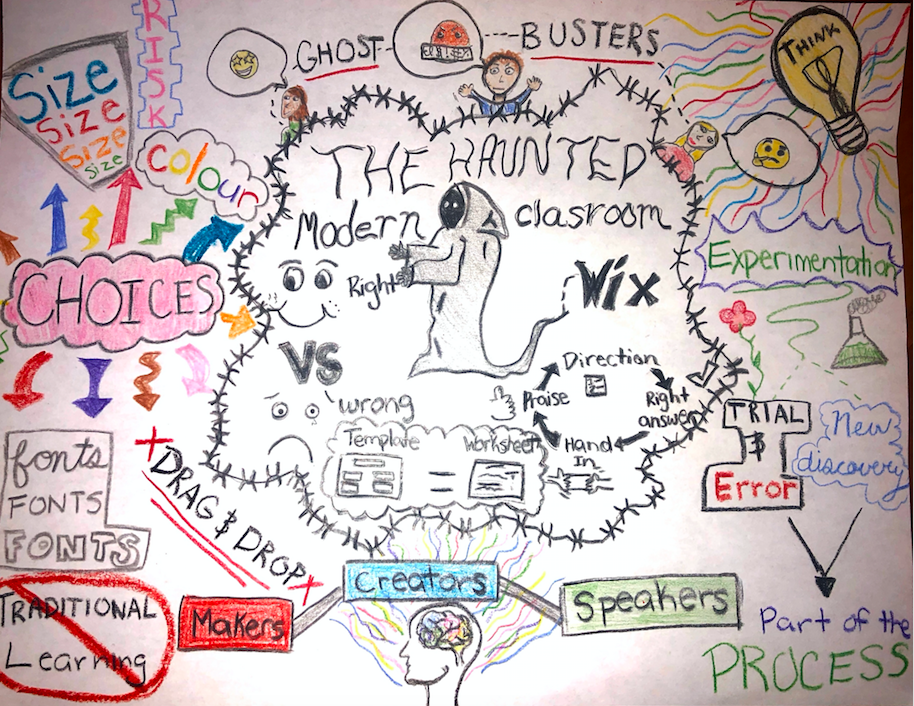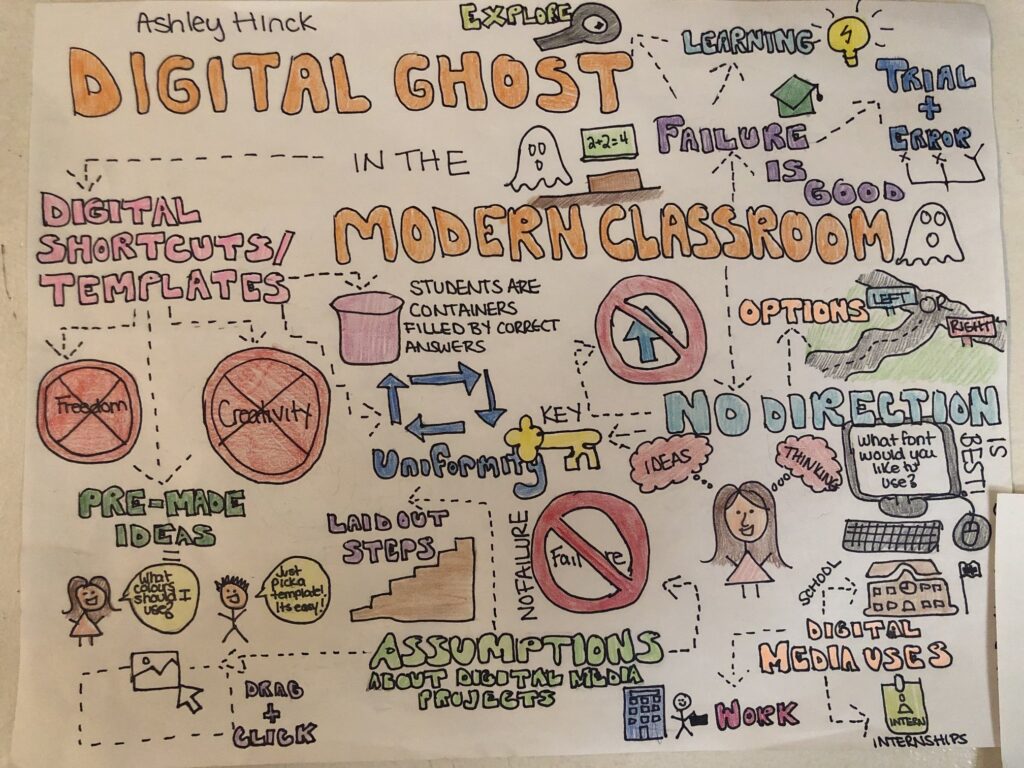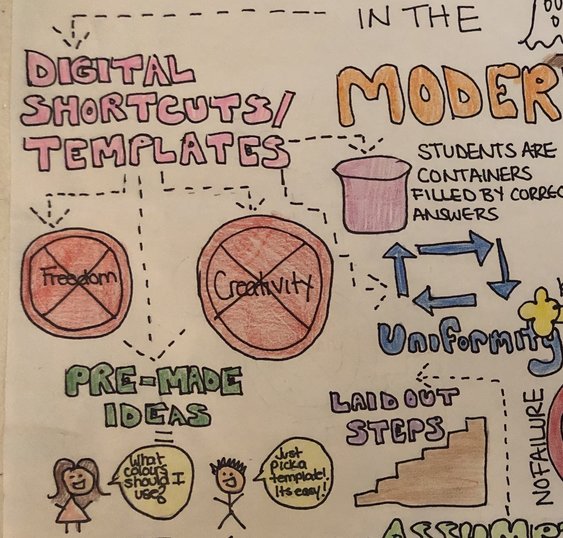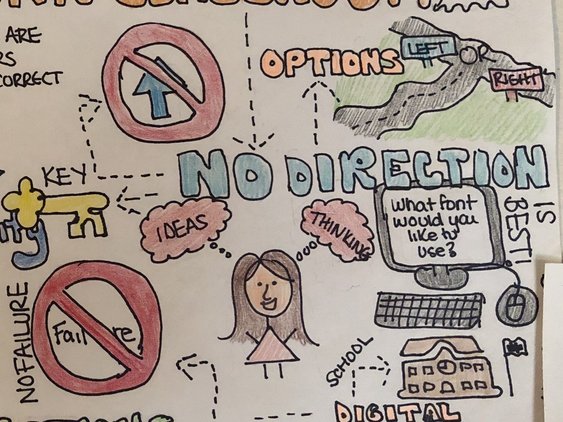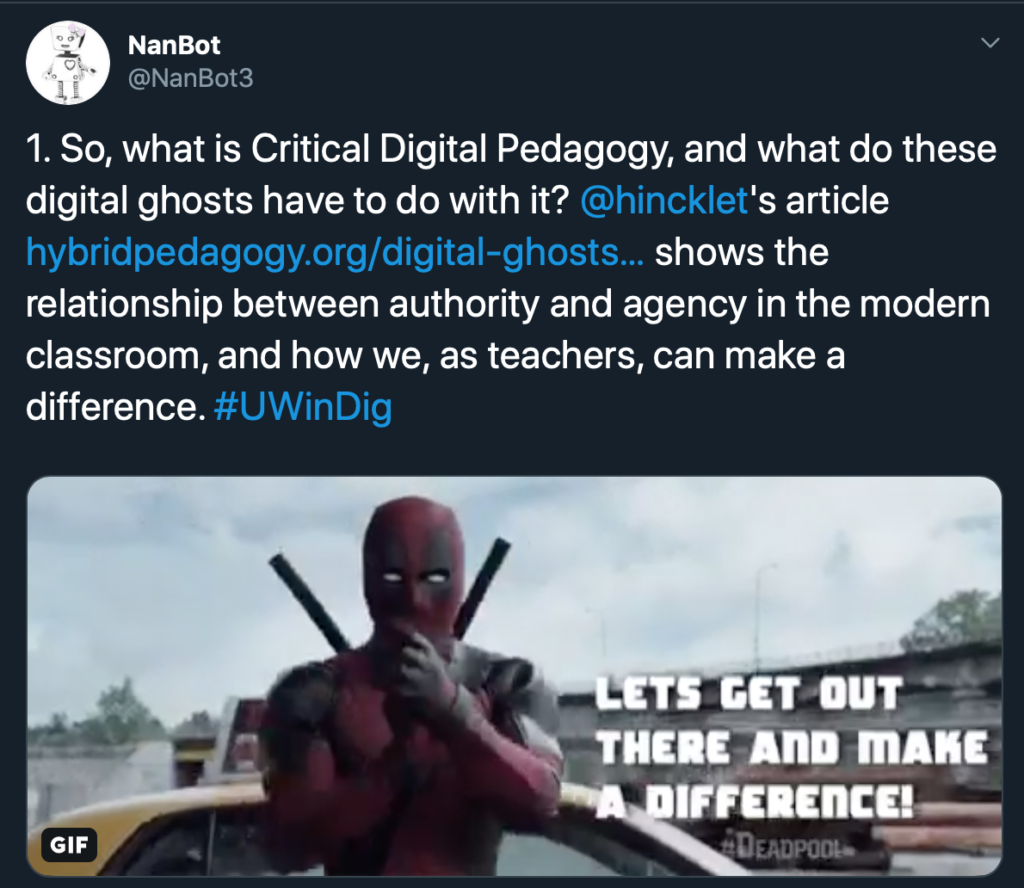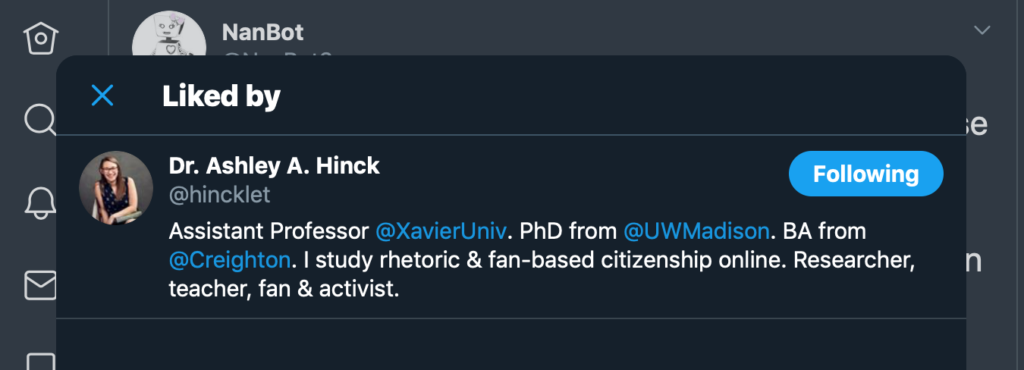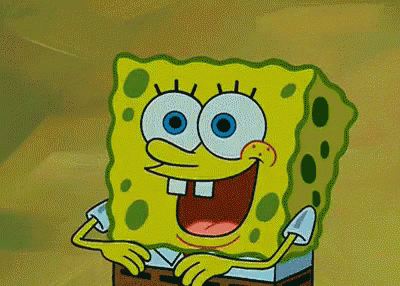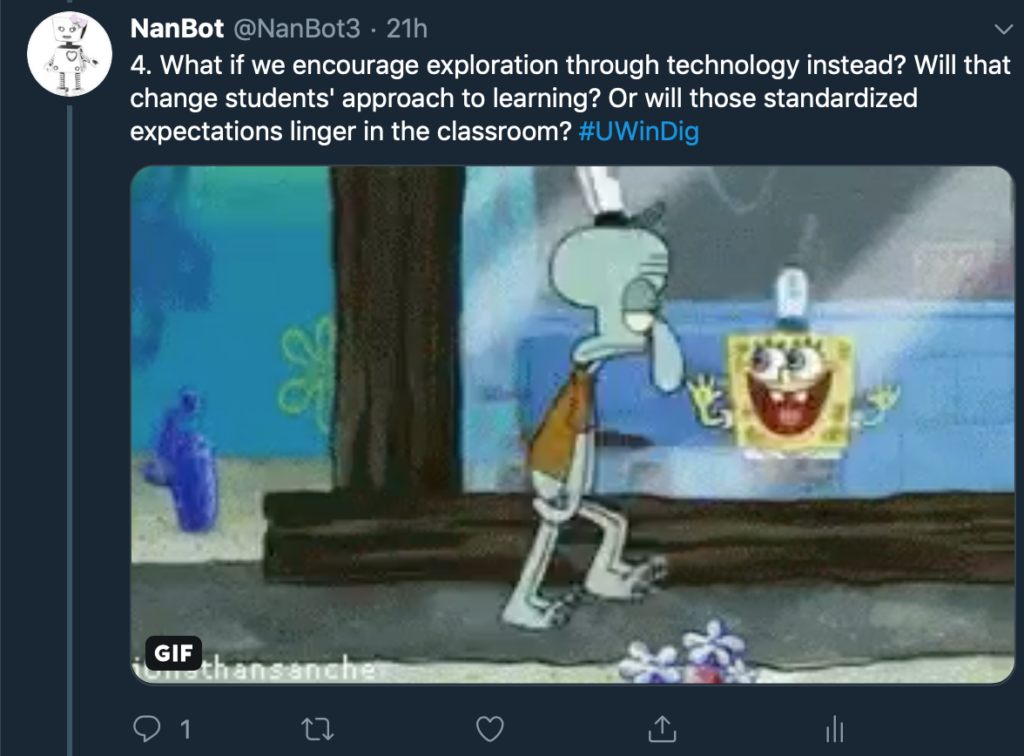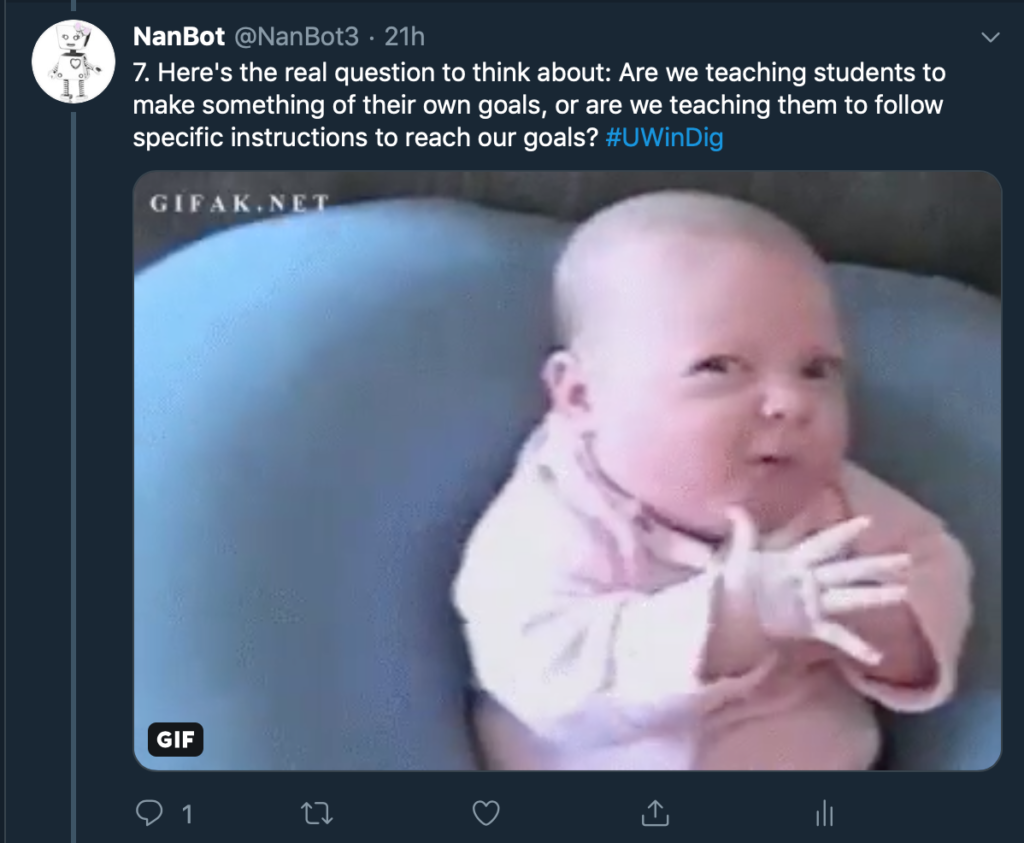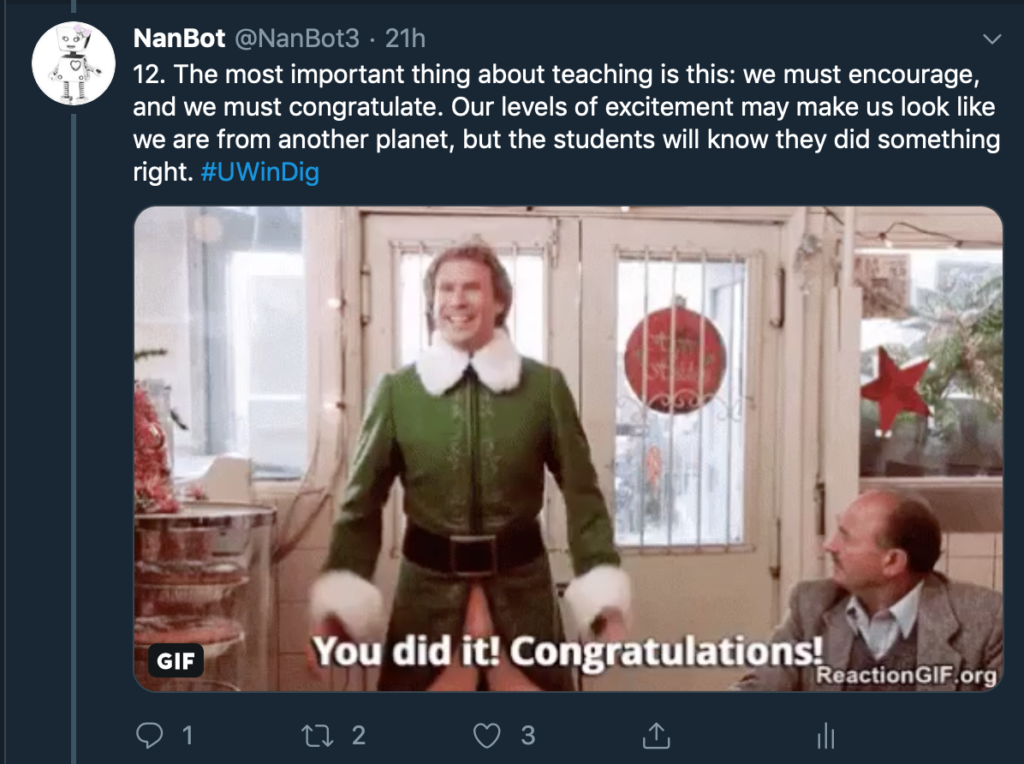The article Digital Ghosts in the Modern Classroom by Ashley Hinck provokes many thoughts about some of the issues in our education systems. One of the main problems brought up in the article is that schools are killing our creativity by encouraging the use of “drag and drop” rather than making unique decisions. We need to encourage making mistakes rather than everything needing to be done without errors because learning from our flaws is the best way to learn.

The article critiques teacher’s use of template sites in web designing and other digital technologies as opposed to coding your own site. I agree with everything that Hinck discussed because individuality and creativity is something that is very underappreciated, and we should be able to choose what we want to make and not what someone has already made for us. Taking the easy way out is not the best solution to most problems in life.
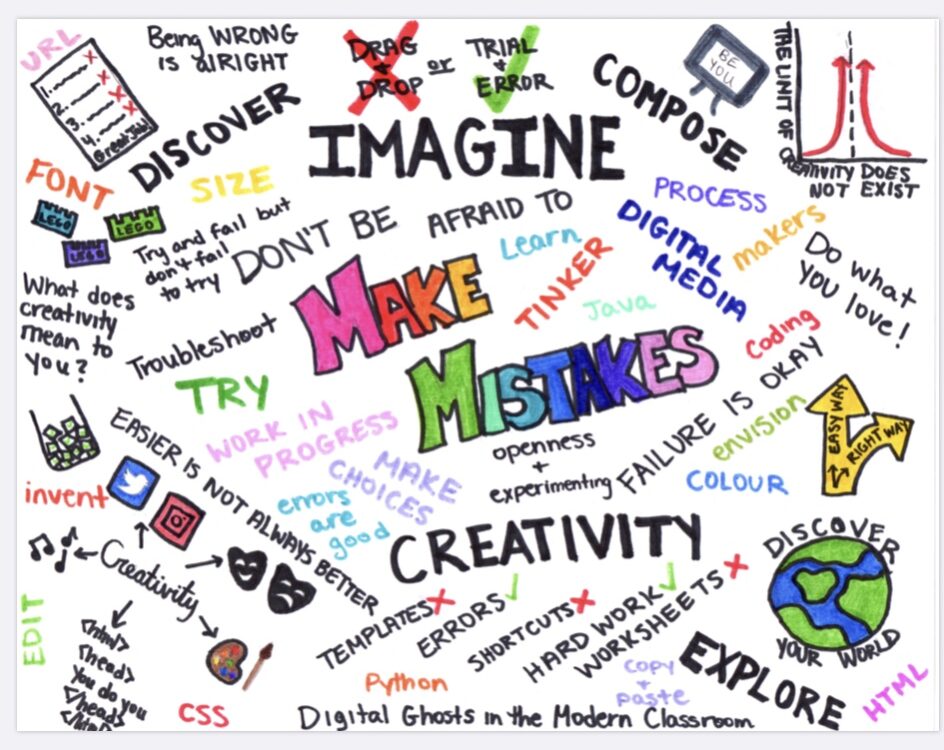
I decided to create a sketchnote because I’ve never done one before and I like the idea of being able to write down simplified thoughts and leaving it completely open to my interpretation of the content in the article. When making my sketchnote, I decided that the main message I wanted to get across was that it’s okay to make mistakes. Making mistakes and learning from them is something that should be encouraged and not shut down.
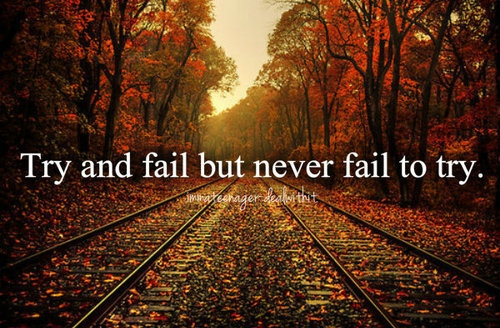
Other pieces of the article that I thought should be emphasized were the concepts of imagination and creativity. I also put the quote “try and fail but don’t fail to try” on the page because it is an important concept to understand that you cannot fail unless you don’t try. More students and teachers need to have that mentality instead of automatically assuming someone isn’t intelligent just because they get a test question wrong.

Our education system supports the idea of right and wrong, but I personally believe in a less explicit approach. As well as the mandatory cut and dry assessments that will be required of me as a teacher, I plan on having more unique evaluation opportunities to give all types of students a chance to succeed in my class. Everyone learns in a different way so I will be sure to get to know all my students and their learning styles so I can be the best teacher possible. I’ve had some amazing teachers growing up that always encouraged me to make my own decisions and I’ve had some awful teachers that make you feel stupid for not being perfect. I hope to be the type of teacher that will be remembered in a positive way and really help students reach their full potential.

